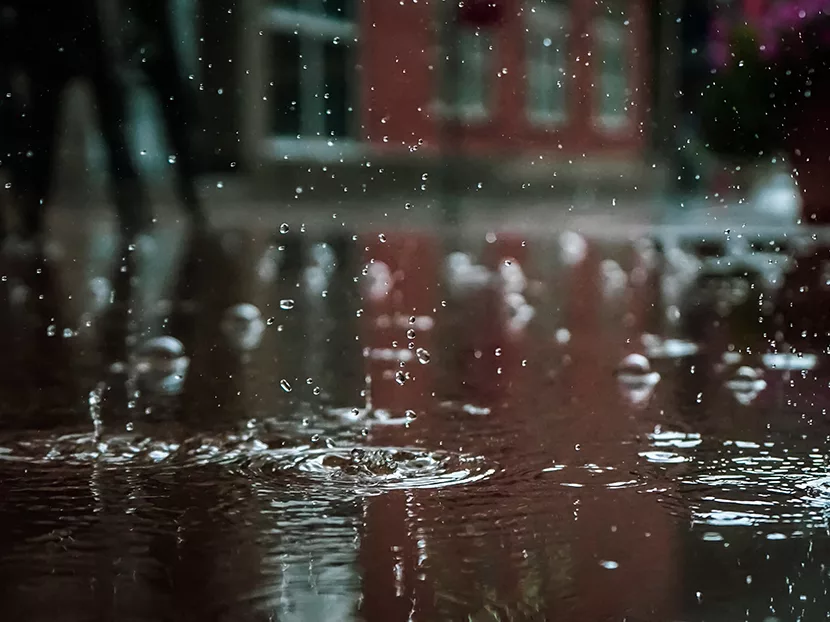The U.S. Environmental Protection Agency (EPA) announced the winners of its seventh annual Campus RainWorks Challenge, a national competition that engages college students in the design of on-campus green infrastructure solutions to address stormwater pollution.
“EPA’s Campus RainWorks Challenge encourages students to transform classroom knowledge into innovative ideas to solve real-world environmental problems,” said EPA Administrator Andrew Wheeler. “I congratulate this year’s winners, and it is encouraging to see how contestants worked closely with their local communities to develop ways to protect water resources from harmful stormwater pollution.”
Stormwater runoff is a significant source of water pollution in America. Managing runoff remains a complex environmental challenge for local communities across the country. EPA’s Campus RainWorks Challenge asks students and faculty members at colleges and universities across the country to apply green infrastructure design principles, foster interdisciplinary collaboration, and increase the use of green infrastructure on the nation’s college campuses.
Through this year’s challenge, EPA invited student teams to compete in two design categories: the Master Plan category, which examines how green infrastructure can be broadly integrated across campus, and the Demonstration Project category, which focuses on how green infrastructure can address stormwater pollution at a specific site on campus. With the help of a faculty advisor, teams of students focused their expertise, creativity, and energy on the challenges of stormwater management and showcased the environmental, economic, and social benefits of green infrastructure.
The following are the challenge winners:
University of Oregon (First Place Demonstration Project Category) - The team’s project, titled “Good Drainage Good Vibes,” redesigned a local high school campus to incorporate a variety of green infrastructure practices. Extensive stakeholder engagement within the community led to a practicable design capable of not only managing stormwater runoff onsite, but also providing hands-on education for students and connecting the local community their watershed.
“The challenge was meaningful for our College of Design students because it created a chance to collaborate on tackling an urgent environmental design problem while working with local high school students on connecting the community with their watershed," said University of Oregon College of Design Dean Christoph Lindner.
University of Louisiana at Lafayette (Second Place Master Plan Category) - Titled “The Ripple Effect,” this project’s ambition reached beyond the borders of its own campus. Located in low-lying Southern Louisiana, the community of Lafayette often experiences extreme weather events that cause flooding and threaten infrastructure. With the support of the university’s Department of Sustainability, the team redesigned their campus to incorporate realistic, replicable green infrastructure practices that engage with the broader community to cultivate regional resiliency.
“The Ripple Effect is designed to improve infrastructure at UL Lafayette, and to provide a framework for using campus as a ‘living lab’ for researching and developing green infrastructure strategies that will benefit the entire community and region,” said Gretchen LaCombe Vanicor, director the Office of Sustainability at the University of Louisiana at Lafayette.
University of Arizona (Second Place Demonstration Project Category) - Their project titled “(Re)Searching for a Spot,” this team proposed to transform a parking lot to manage stormwater runoff onsite, reduce local flooding during Arizona’s monsoon season, and create a multi-functional space that yields educational and ecological benefits. The design’s proximity to relevant research departments on-campus inspired the students to incorporate monitoring installations into the design to provide quantitative information on the environmental benefits of green infrastructure practices.
“We are so thankful to the EPA for providing this opportunity to have real-world project ideas submitted and evaluated by experts,” said Nancy Pollock-Ellwand, dean of the College of Architecture, Planning and Landscape Architecture at the University of Arizona. “Students not only have the opportunity to evaluate their local surroundings, but also to think critically about the immense damage that can be caused by urban flooding.”
Florida International University (Second Place Master Plan Category) – The “EcoFlow” entry integrated multiple green infrastructure practices into a master plan design that emphasizes resilience. Located in South Florida, the university’s Modesto Maidique campus is susceptible to extreme weather events that are further exacerbated by dense development and low ground elevation. Using the existing design features of the campus, the team created an interconnected system that mitigates both stormwater pollution and flooding and enhances the recreational, educational, and aesthetic value of the campus.
“This project exemplifies the creativity and innovativeness we are cultivating here at FIU. Our students are dedicated problem solvers addressing real-world engineering challenges and work collaboratively alongside faculty and industry partners,” said John Volakis, dean of the FIU College of Engineering and Computing. “In this case, our civil engineering students introduced a design that incorporates green infrastructure elements. As a college, we couldn’t be more proud of their achievements.”
First place teams will receive a $2,000 student prize to be split among team members and a $3,000 faculty prize to support green infrastructure research and education. Second place teams will receive a $1,000 student prize and a $2,000 faculty prize.
EPA is also pleased to recognize Utah State University for honorable mention in the Demonstration Project category and the University of Arizona for honorable mention in the Master Plan category.
Since 2012, more than 600 teams have participated in the challenge. Green infrastructure tools and techniques for stormwater management include green roofs, permeable materials, alternative designs for streets and buildings, trees, habitat conservation, rain gardens, and rain harvesting systems. Utilizing these tools decreases pollution to local waterways by treating rain where it falls and keeping polluted stormwater from entering sewer systems. Communities are increasingly using innovative green infrastructure to supplement “gray” infrastructure such as pipes, filters and ponds. Green infrastructure reduces water pollution while increasing economic activity and neighborhood revitalization, job creation, energy savings, and open space.




